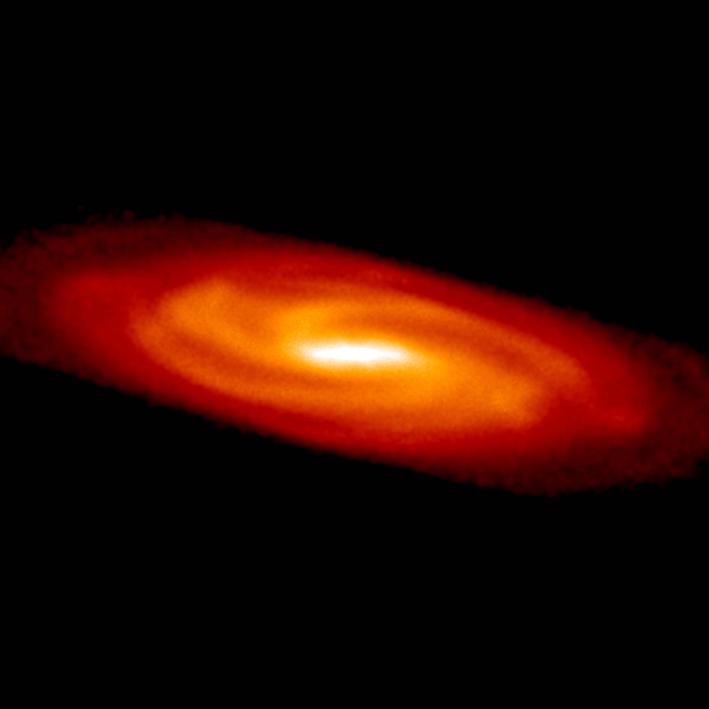But science has mapped the motions of more than 400 stars, up to 13,000 light-years from the Sun, and calculated the mass of material in the vicinity of the Sun in a volume four times larger than ever considered in the past and found it isn't there, disputing prior studies claiming 3-6 times more 'dark matter' than expected using Jan Oort's discovery that the density of matter near the Sun was nearly twice what could be explained by the presence of stars and gas alone.
What's wrong? Computer simulations, basically. So a group of researchers has created another one and this time they say all the other numerical models were biased, always tending to underestimate the amount of dark matter. How does anyone know this model is not biased, since dark matter can't be measured and measured data and calibration is the heart of any accuracy determination? Indeed.

A high resolution simulation of the Milky Way used to test their mass-measuring technique. Picture: University of Zurich
But a new group has claimed a new unbiased technique that recovered the correct answer from the simulated data - building a model to match data would get you fired in the private sector, since that means it won't work for any other problem, but academia is more forgiving. Applying their technique to the positions and velocities of thousands of orange K dwarf stars near the Sun, they obtained a new measure of the local dark matter density and now say it is there.
"We are 99% confident that there is dark matter near the Sun," says lead author Silvia Garbari. They find more dark matter than expected at 90% confidence, meaning there is a 10% chance that this is merely a statistical fluke. Silvia explains: "This could be the first evidence for a "disc" of dark matter in our Galaxy, as recently predicted by theory and numerical simulations of galaxy formation, or it could mean that the dark matter halo of our galaxy is squashed, boosting the local dark matter density."
Some are placing their bets on dark matter being a new fundamental particle that interacts only very weakly with normal matter, but strongly enough to be detected in experiments deep underground. An accurate measure of the local dark matter density is vital for such experiments, says co-author Prof. George Lake. "If dark matter is a fundamental particle, billions of these particles will have passed through your body by the time your finish reading this article. Experimental physicists hope to capture just a few of these particles each year in experiments like XENON and CDMS currently in operation. Knowing the local properties of dark matter is the key to revealing just what kind of particle it consists of."
Citation: Silvia Garbari, Chao Liu, Justin I. Read, George Lake. A new determination of the local dark matter density from the kinematics of K dwarfs. Monthly Notice of the Royal Astronomical Society. 9 August, 2012. 2012arXiv1206.0015G.





Comments